
by Joe Bollig
joe.bollig@theleaven.org
KANSAS CITY, Kan. — Now that the Value Them Both amendment has been defeated, a big question looms: What’s next?
One answer is that the church must redouble its pastoral response.
“This turns our attention to our pastoral efforts,” said Archbishop Joseph F. Naumann. “While we can’t protect women and children from abortion by the law, we can with love.”
“This makes the work of our pregnancy resource centers more important. We need to redouble our efforts in those areas. I and the church are certainly committed to doing that. And our post-abortion ministry becomes even more important.”
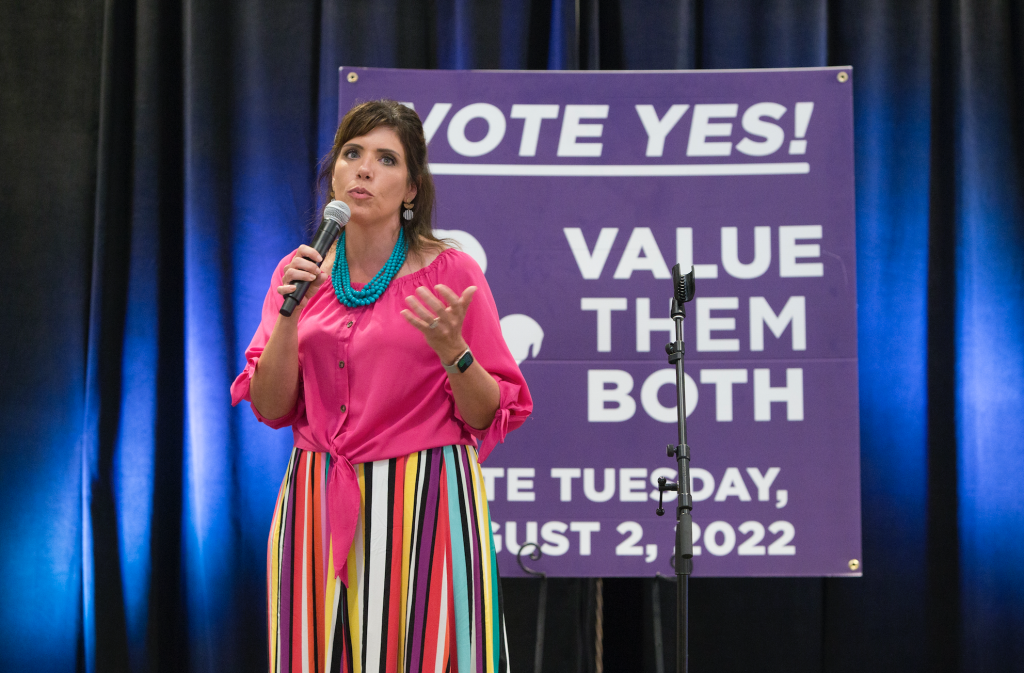
The church will have its work cut out for it.
“Clearly, Kansas is going to grow now as an abortion destination state for the Midwest,” said Chuck Weber, executive director of the Kansas Catholic Conference.
“We, as a church, have to step forward with resources and alternatives, like pregnancy resource centers and post-abortive services, to offer these women who are being preyed upon by the abortion industry an alternative.”
Saddened but grateful
Pro-life activists are “deeply saddened” by the loss, but grateful, too.
“We are profoundly grateful for the countless prayers, volunteer hours and sacrifices that so many across the entire state gave to Value Them Both,” said Debra Niesen, archdiocesan lead consultant for pro-life ministries.
“We are so proud of everyone who courageously and joyfully advocated for this very noble and important cause — the defense of preborn children and vulnerable women facing an unplanned or challenging pregnancy.”
Kansans voted 534,134 votes or 59 percent against the amendment, and 374,611 votes or 41 percent in favor of the amendment.
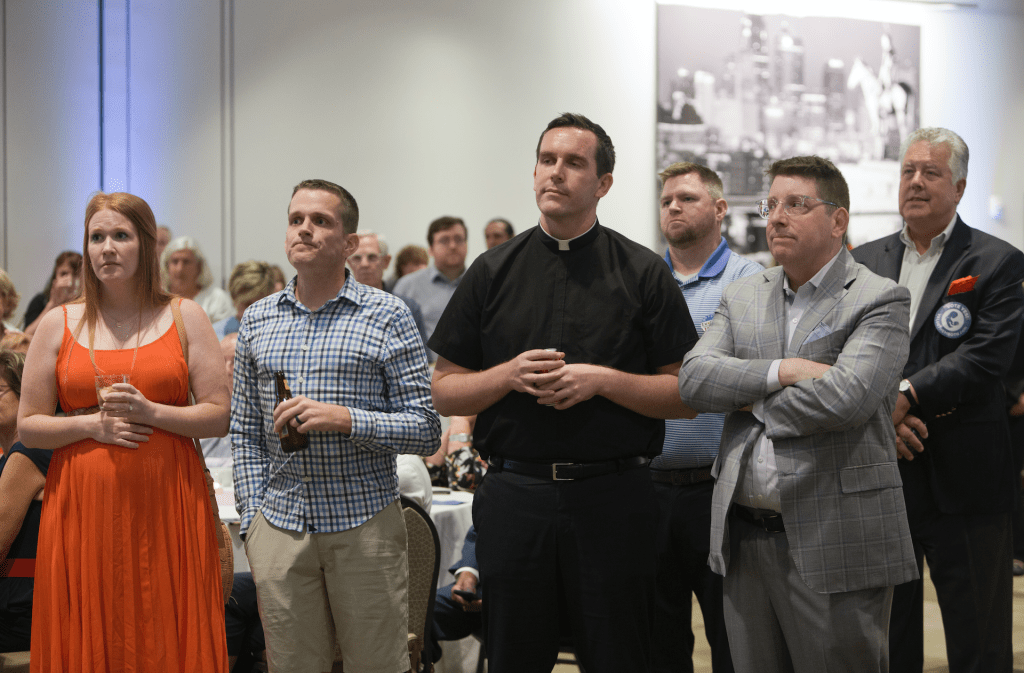
Anti-amendment forces won the special election on Aug. 2, which was also a primary, through an effective campaign of fear and misinformation, said Archbishop Naumann.
“I think we’re in a great cultural struggle right now,” he said. “Fifty years of legalized abortion in this country has conditioned people to think that there is a right to abortion. What is the right they’re talking about? The right to kill our own children.”
This vote does not mean the state has changed, said Niesen.
“We do not believe that Kansas has become a pro-abortion state, but we were not able to overcome the millions in out-of-state money that the abortion industry spent,” she said. “Sadly, I believe that the majority of Kansans who voted ‘no’ did not fully understand the amendment as a result.”
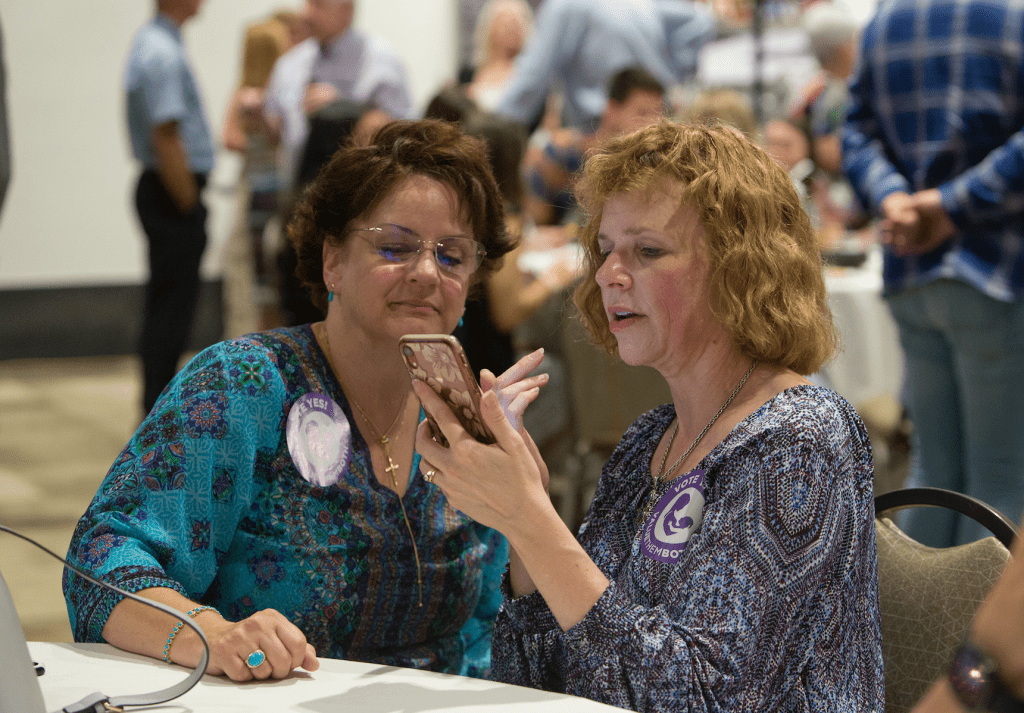
The Value Them Both amendment would have reversed the 2019 Kansas Supreme Court decision that found a right to unlimited and unrestricted abortion in the state’s 1859 constitution.
The state’s high court ruling in Hodes & Nauser v. Schmidt has effectively nullified more than 20 years of pro-life legislation by making abortion a fundamental right, placing all abortion-regulating laws under a stricter standard of scrutiny.
Because of the Hodes ruling, laws banning the live dismemberment of unborn children, as well as laws requiring clinic licensing and inspections, have been struck down. More laws are expected to fall as they are challenged.
Cash and misinformation
Millions in largely out-of-state cash powered the “no” vote.
“The abortion industry and its supporters were able to concentrate a tremendous amount of resources in Kansas,” said Archbishop Naumann. “More than 70 percent of the money spent on their campaign came from outside of Kansas. Additionally, their campaign was a campaign of misinformation and scaring people with arguments that were absurd.”
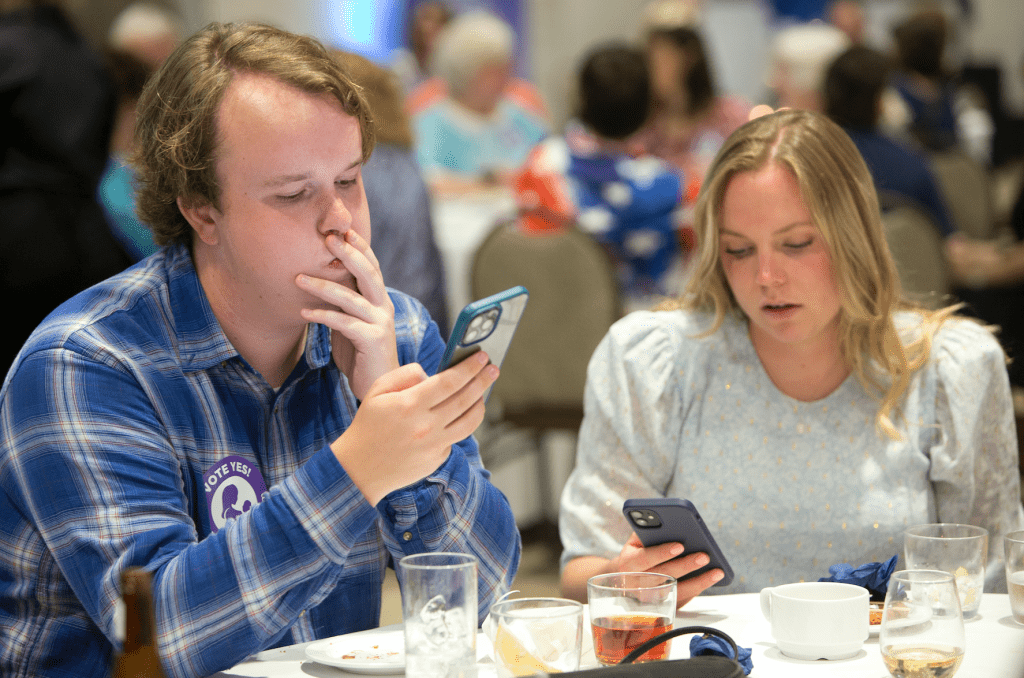
Also aiding the anti-amendment campaign was the secular media’s failure to hold it accountable for spreading fear and misinformation about the amendment — such as restricting medical care for ectopic pregnancies and miscarriages, as well as it being an abortion “ban.”
Anti-amendment forces also misled voters by claiming there was no need for Value Them Both because Kansas has strong laws regulating abortion. But there was more to the story.
“They would tout all the limits that the abortion industry fought against in the legislature,” said Jeanne Gawdun, director of government relations for Kansans for Life.
“They continued to cite these limits, never once saying those limits are now presumed unconstitutional and will be struck down by abortion industry lawsuits. And the mainstream media was a willing accomplice to spreading this misinformation.”

The U.S. Supreme Court’s reversal of the 1973 Roe v. Wade decision in its June 24 ruling of Dobbs v. Jackson Women’s Health Organization contributed to a very strong turnout compared with past primary elections.
“I think it obviously motivated people on both sides of the issue to come out,” said Archbishop Naumann. “Again, I’d go back to the campaign the other side ran, which was to frighten and scare people.
“So, the big turnout in this election was the unaffiliated. A lot of those unaffiliated, from what I could see, voted ‘no’ on the amendment. . . . It brought out a lot of voters that normally wouldn’t come out in a primary.”
The timing of the Dobbs ruling, coming so close to the election, fueled not only turnout but also confusion.
“That ruling created a period of confusion in our culture,” said Weber. “I think Americans are still trying to wrap their heads around what the overturning of Roe v. Wade means.
“The abortion industry successfully created an environment of hysteria that fed into their narrative that somehow women would not get proper health care if we passed the ‘Value Them Both’ amendment.”
Reading the tea leaves
Seemingly, the vote did not break entirely along party lines, and there seemed to be many factors at play: a high number of first-time voters, a rural vs. urban/suburban split, and perhaps a generational factor.
“It’s true there was some difference between rural and urban . . . [and] generational as well,” said Gawdun. “A lot of the younger generation have been brought up knowing about [live dismemberment abortion]. They knew this was what they were doing to babies . . . But the ones in their late 20s have grown up with this as a so-called right. They were told Value Them Both would take away their right, and it’s not a right.”
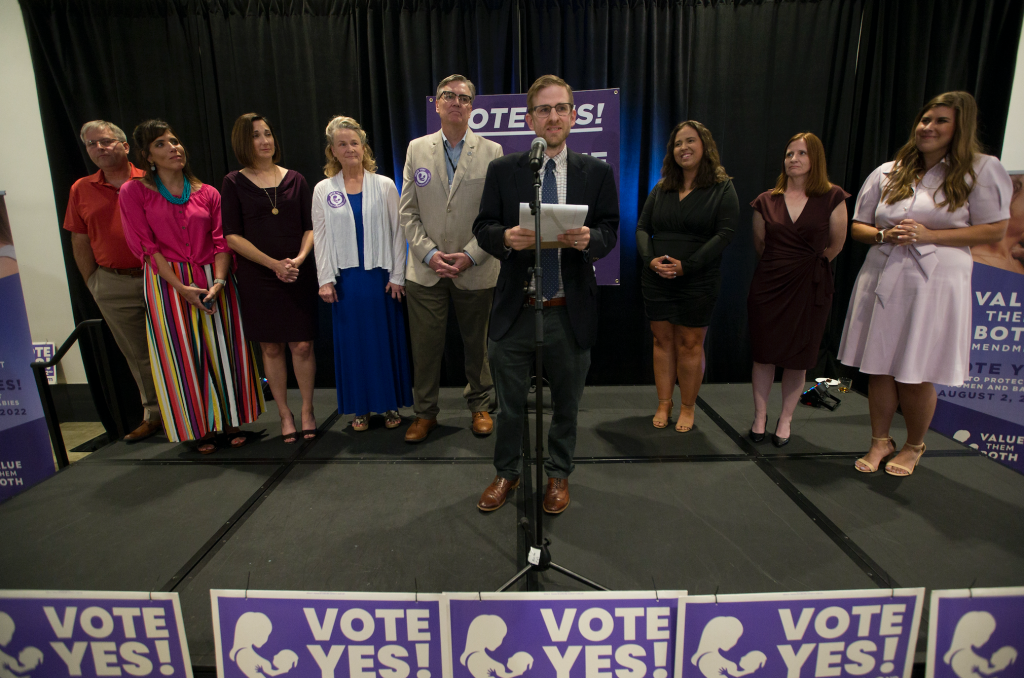
Archbishop Naumann frequently stressed the campaign to pass the amendment was an effort to uphold human, rather than religious, rights. And that the Catholic Church had a rightful place in that fight.
“Religious faith . . . helps people see the moral implications of these human rights issues,” he said. “Historically — whether it was slavery or civil rights — [people of faith] have always led the way on human rights causes. But this is what it is, a human rights cause. It doesn’t take religious faith to know that it’s wrong to kill a child.”
There was an ugly side of the campaign that saw instances of vandalism and intimidation directed at Value Them Both supporters.
“The abortion industry targeted the Catholic Church as a way to deflect from the real question of unlimited and unrestricted abortion in Kansas,” said Weber. “They successfully changed the conversation, and the secular news media not only allowed them to make that happen but became an echo chamber for that narrative.”
Prayer and action
Gawdun predicts that, despite the difficulties, pro-life efforts will continue on the political level.
“There are certainly some things we can do,” she said. “And if we do have pro-life majorities [in the legislature] and a pro-life governor, we can pass some things. But whether or not they’ll be upheld in court is another matter.”
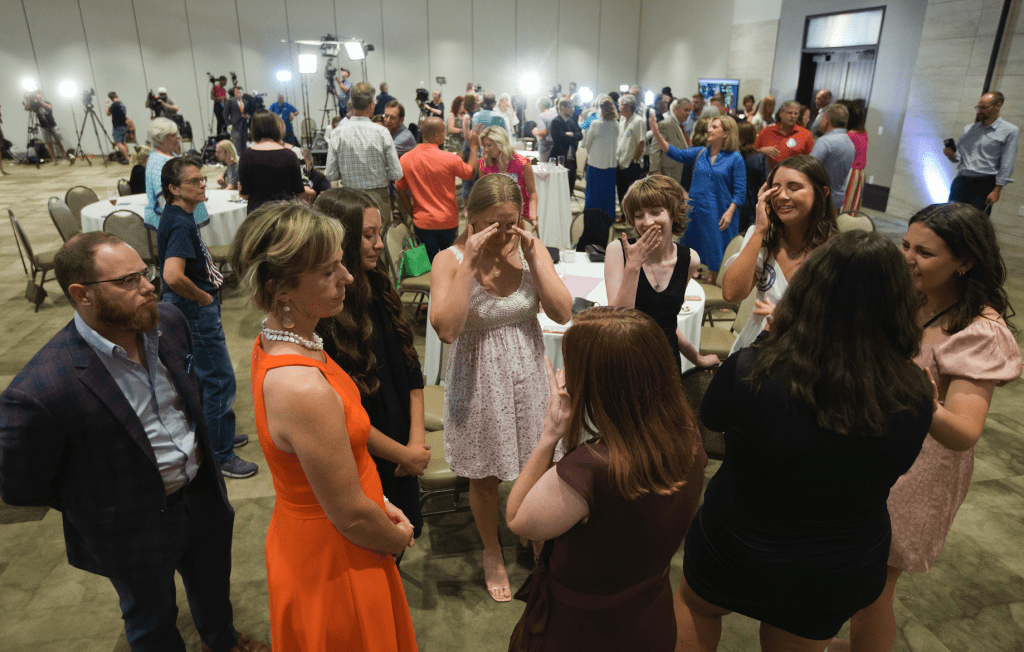
As the church faces the post-election realities, all efforts must draw strength from spiritual sources, said Archbishop Naumann.
“The foundation of everything we do is prayer,” he said. “The election results drive us to our knees to pray for guidance from the Lord and the Holy Spirit as how we go about building this culture of life and civilization of love, where every life will be respected and cherished — the unborn child and the mother as well.”







I think most Kansans understood what they were voting for and were not confused — even though amendment supporters purposefully tried to make the wording confusing and to place it on the ballot when fewer people would vote. The bottom line is a significant majority of Kansans trust their neighbors to make the best medical decisions for themselves and their families.
I too hope the yes and no side can work together to expand Medicaid, ensure food and housing are affordable, and provide affordable child care options for families. That will reduce the number of abortions.
So gracefully said Gina. Planned Parenthood has been stripped over the years of necessary funding to help those in need of medical planning, stripped of social workers and support personnel that many of my friends used and valued as they work low wage jobs without insurance. I too hope that that both sides can work together and help get to the real issues that so many of our brothers and sisters in Christ are having to deal with everyday.